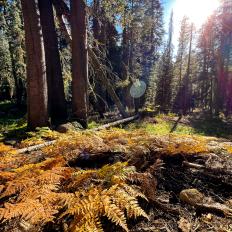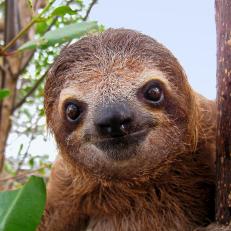Meet the Pollinators that Change the World
Happy National Pollinators Week! This week is dedicated to highlighting and bringing awareness to the many animals and insects that play a key role in the pollination process.
Without many of these creatures, plants around the world wouldn't be able to grow and spread. We have these critters to thank for pollination, the transferring of pollen from one plant to another. Pollen from one plant becomes attached to pollinators and as they go flower to flower, they spread and mix pollen. This fertilizes the plants and allows them to create seeds, starting the cycle over with new budding flowers.
Thank you pollinators!
Honey Bee
Bees are the number one pollinator on the planet Ranging from 5,000 different species, Honey Bee's are the most common and 'hardest' working bees. Honey Bee's work in colonies that have structures made of a queen bee, who make sureit's the growth of the hive, worker bee's, who retrieve pollen for the hive, and drone bee's, who protect the queen and hive.
European Bee
The European Bee is one of the most common bumble bees in the world. They have a bad reputation of being aggressive and are not favored by beekeepers. Even though they are great pollinators for their hive-making skills and swarm numbers, they do attack when they feel threatened.
Africanized Bees
Africanized Bees are the most aggressive species of bees and have a common name of "killer bees'. These bee's are one of the top pollinators in the bee species. Their massive hives they create and the multitude of bee's working to bring pollen to the hive.
Fig Wasp
Fig wasps are one of the smallest wasp species, as they can grow up to 1.5 mm or 0.006 of an inch. These small insects are great pollinators, as they are the prime pollinators of fig trees. Fig trees require the work and pollination of fig wasps to complete the pollination process. These small insects go unnoticed but have a job unlike any other pollinator.
Pollen Wasps
Pollen wasps are one of the few species of wasps that engage in the pollination process. These wasps differ from other species of wasps since they are vegetarians. They replace eating insects as their main source of food with the necstour of followers. These wasps usually live within hives made of mud and dirt that are attached to rocks, ledges, and sometimes trees.
Bee Flies
Bee flies, also known as hover flies, are one of many fly species that mimic bees. These pollinators retrieve the nectar and pollen from planets that bee's normally couldn't reach with their long tongs. These flies are easily mistaken for bees, but the main difference from the pair is that bee flies only have one set of wings, while bee's have two, and obviously, bee flies have no stinger.
Moths
Moths are the most underrated and overlooked pollinators on our list. These nocturnal insects are responsible for maintaining the pollination process when others are least active. They also pick up the slack from bees that may overlook or avoid due to lower levels of pollen within a planet. Moths carry the pollination process for nocturnal plants; they only bloom in the night.
Hummingbirds
Hummingbirds are the top pollinator in the bird species, as the birds will consume up to eight times their body weight of nectar a day. These birds use their thin bills and tube-like tongues to suck the nectar from flowers. As these birds go from flower to flower, they carry pollen on them, thus starting the pollination process for many wildlife plants.
Butterflies
Butterflies and plants have co-existed and relied on one another for thousands of years. These insects' whole lifespan are intertwined with plants and ensure their growth and survival. From caterpillars eating the leaves of plants to butterflies drinking the nectar of flowers.
Bats
Bats are the soul pollinator for over 500 species of tropical plants and fruits. Since these creatures work at night, many blooming flowers that appear at night rely on bats for the transfer of pollen all together. Many species of plants have evolved to accommodate the needs of bats, like the Venezuelan columnar cacti, who changed its sizes to better fit bats.
























